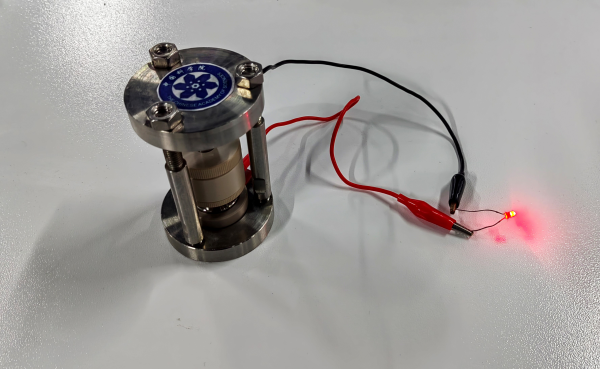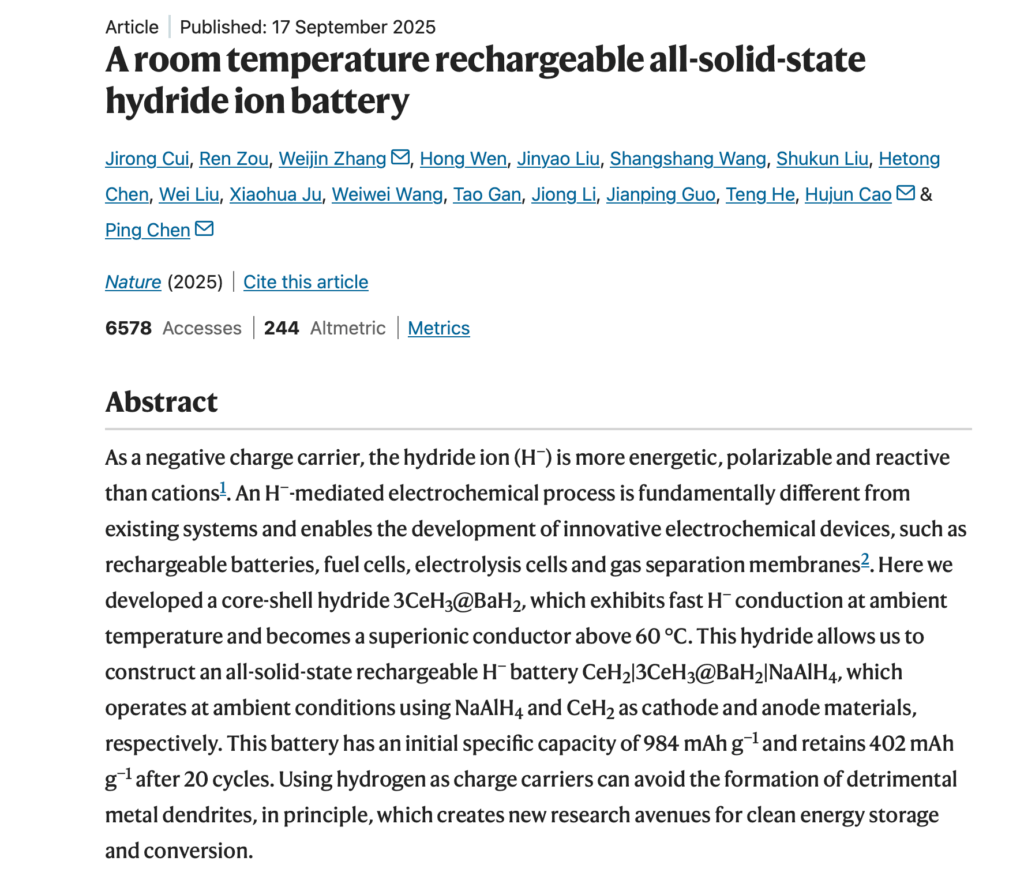
Chinese scientists have achieved a milestone in energy storage: after seven years of intensive research, a team at the Dalian Institute of Chemical Physics, Chinese Academy of Sciences has built the world’s first working prototype hydride‑ion battery (i.e. a hydrogen negative‑ion battery). Their findings, detailing a novel electrolyte and full cell demonstration, were published in Nature on 17 September.

Hydrogen is a cornerstone in visions of future clean energy systems. In electrochemistry, it can exist as a proton (H⁺), a neutral atom (H), or in the rarer hydride (H⁻) form. The hydride ion carries high electron density, strong polarization potential, and high reactivity—qualities that make it an intriguing energy carrier. But until now, hydride‑ion batteries remained largely theoretical, hampered by the absence of an electrolyte that simultaneously offers high ionic (H⁻) conductivity, low electronic leakage, thermal and electrochemical stability, and good electrode compatibility.
Overcoming these challenges, the Chinese team devised a core–shell composite hydride as the electrolyte: cerium trihydride (CeH₃) encapsulated in a thin shell of barium hydride (BaH₂). This 3CeH₃@BaH₂ structure combines the fast hydride conduction of CeH₃ with the electronic suppression and stability of BaH₂, enabling H⁻ conduction at room temperature while maintaining robust thermal and electrochemical properties.
Using that electrolyte, researchers assembled an all‑solid‑state hydride‑ion prototype battery with sodium aluminum hydride (NaAlH₄) as the cathode material and hydrogen‑deficient cerium dihydride (CeH₂) as the anode. In testing, the positive electrode achieved an initial discharge capacity of 984 mAh/g and retained 402 mAh/g after 20 cycles. In a stacked cell configuration, the battery reached 1.9 volts—enough to power an LED lamp—demonstrating its functional viability.
The team credits earlier breakthroughs in hydride ion conduction for enabling this advance. In 2023, they introduced a “lattice distortion suppression of electronic conductivity” strategy, achieving ultrafast hydride ion conduction at ambient conditions—an essential foundation for moving toward a full battery.
This achievement shifts hydride‑ion batteries from concept toward experimental reality, and opens a new technical pathway in energy storage. The researchers plan to refine electrode materials, further optimize system performance, and broaden application scenarios—targeting large-scale energy storage, hydrogen storage, mobile power sources, and specialized power systems.
The scientific and application implications are substantial. If the challenges of scalability, cycle life, energy density, and cost can be addressed, hydride‑ion batteries might emerge as a complementary technology to lithium-ion and other advanced battery systems. As Chemical & Engineering News notes, this battery “delivers electrical current by using hydrogen in the form of hydride ions to mediate power‑producing electrochemical reactions” and represents a promising new direction in solid-state battery research.
This breakthrough underscores China’s growing strengths in next-generation battery research. The leap from theoretical possibility to tangible prototype will fuel further competition in clean energy storage and may, over time, reshape the landscape of energy conversion and storage globally.
Source: Huanqiu, CGTN, Xinhua, CAS, Nature



